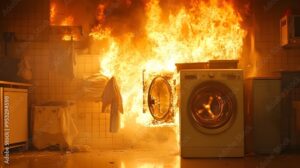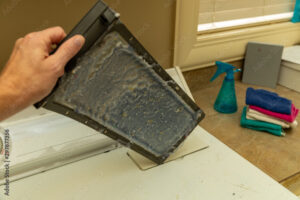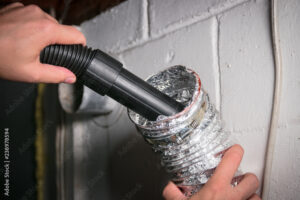Dryers are a staple in many households, providing the convenience of quickly drying clothes. However, they also pose a hidden danger that many homeowners overlook—lint fires. While it may seem harmless, dryer lint is highly flammable and can lead to devastating house fires if not managed properly. This blog post will guide you through understanding what causes dryer lint fires, how to recognize the signs, and most importantly, how to prevent them.
Home Alarms || Fire, Flood, and Radon Alarms
https://youtu.be/YG9p5ePT5lk
What Causes Dryer Lint Fires?
Accumulation of Lint
Dryer lint is a byproduct of the drying process, created when clothes shed fibers while tumbling. Over time, these tiny fibers accumulate in various parts of your dryer, including the lint trap, exhaust vent, and even within the machine itself. This buildup can reduce airflow and create a fire hazard.
Overheating
When airflow is restricted due to lint accumulation, the dryer can overheat. Most dryers have safety features to prevent overheating, but lint can bypass these safeguards, reaching temperatures high enough to ignite the lint itself.
Infrequent Cleaning
Neglecting the regular cleaning of your dryer’s lint trap and exhaust duct significantly increases the risk of a fire. An uncleaned system means more lint accumulation and a higher likelihood of overheating.
How to Know If You’re at Risk
Longer Drying Times
If your clothes are taking longer than usual to dry, it might be a sign that your dryer is clogged with lint. Reduced efficiency is often the first indicator that lint is restricting airflow.
Excessive Heat
Feeling excessive heat in the laundry room or noticing that your dryer is hot to the touch are warning signs. This could mean the dryer is overheating due to lint blockage.
Burning Smell
A burning smell coming from your dryer is a serious warning sign. If you detect this odor, stop using your dryer immediately and inspect it for lint buildup.
How to Prevent Dryer Lint Fires
Regular Maintenance
- Clean the Lint Trap: Clean the lint trap before or after each use to ensure proper airflow.
- Inspect the Exhaust Vent: Check the exhaust vent at least once a year to ensure it’s clear of lint and debris. Consider hiring a professional for thorough cleaning if necessary.
Install Smoke Detectors
Place smoke detectors in your laundry room or nearby areas to ensure you’re alerted at the first sign of trouble.
Avoid Overloading
Overloading your dryer can lead to excess lint production and restricted airflow. Always follow manufacturer guidelines for load sizes.
Use the Right Materials
Ensure that your exhaust vent is made of rigid or flexible metal. Plastic or foil vents can sag, trapping lint more easily and creating a fire hazard.
Conclusion
Understanding the risks associated with dryer lint fires is crucial for homeowners, tenants, and anyone who values fire safety. By taking proactive measures to maintain your dryer and recognizing the warning signs, you can significantly reduce the risk of a fire in your home. For those who enjoy DIY projects, learning to clean and maintain your dryer is an essential skill that can save lives and property.
For further guidance on fire safety and maintaining your household appliances, be sure to follow our blog for future posts and updates. Stay safe and keep your home fire-free!
For Tons of Great Free Information please hit “Like & Subscribe”
Websiteconstructionconsumeradvocacyinstitute.com
Podcastanchor.fm/galloway
www.youtube.com/@ConstructionConsumerAdvocacy





